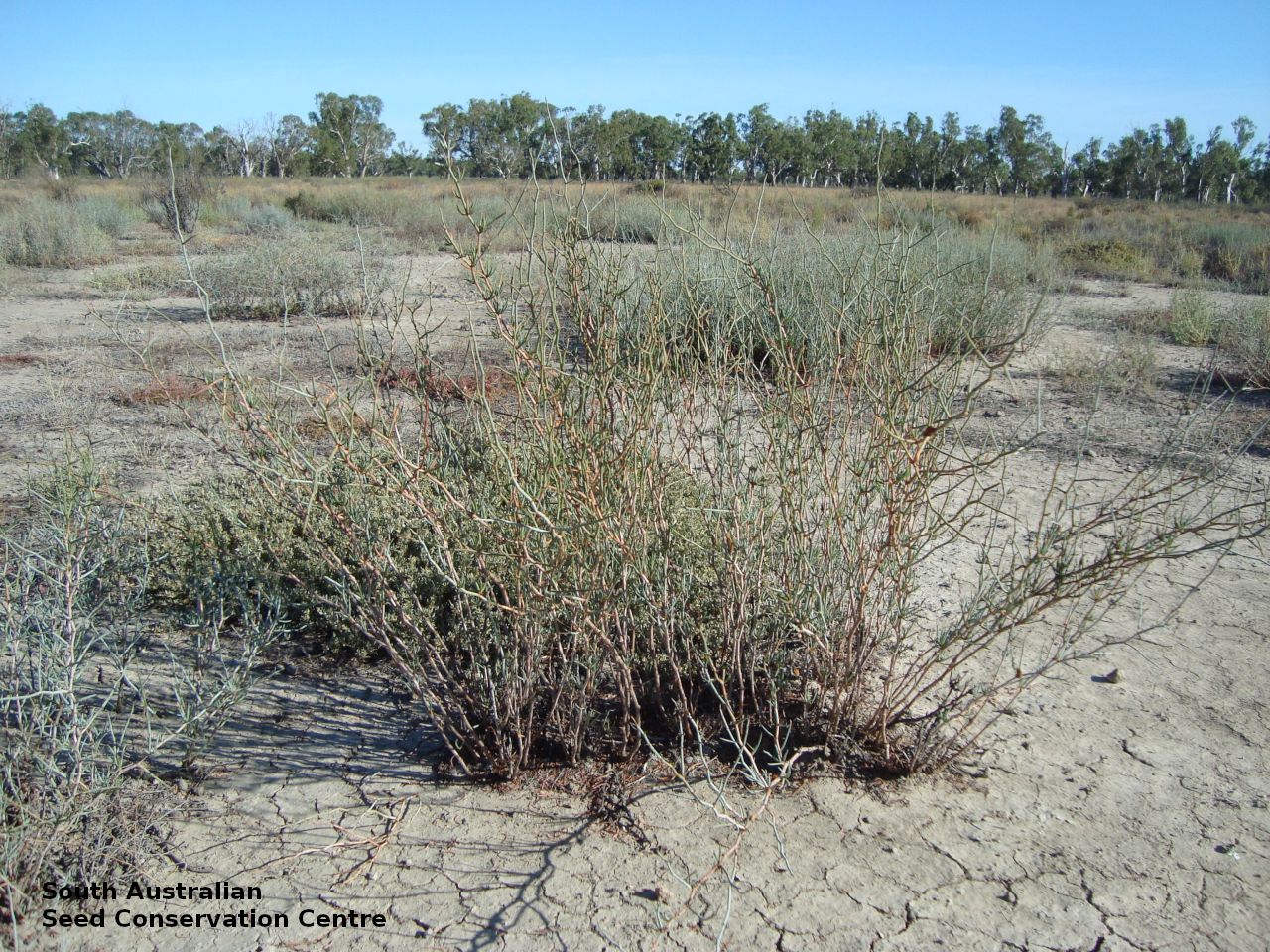
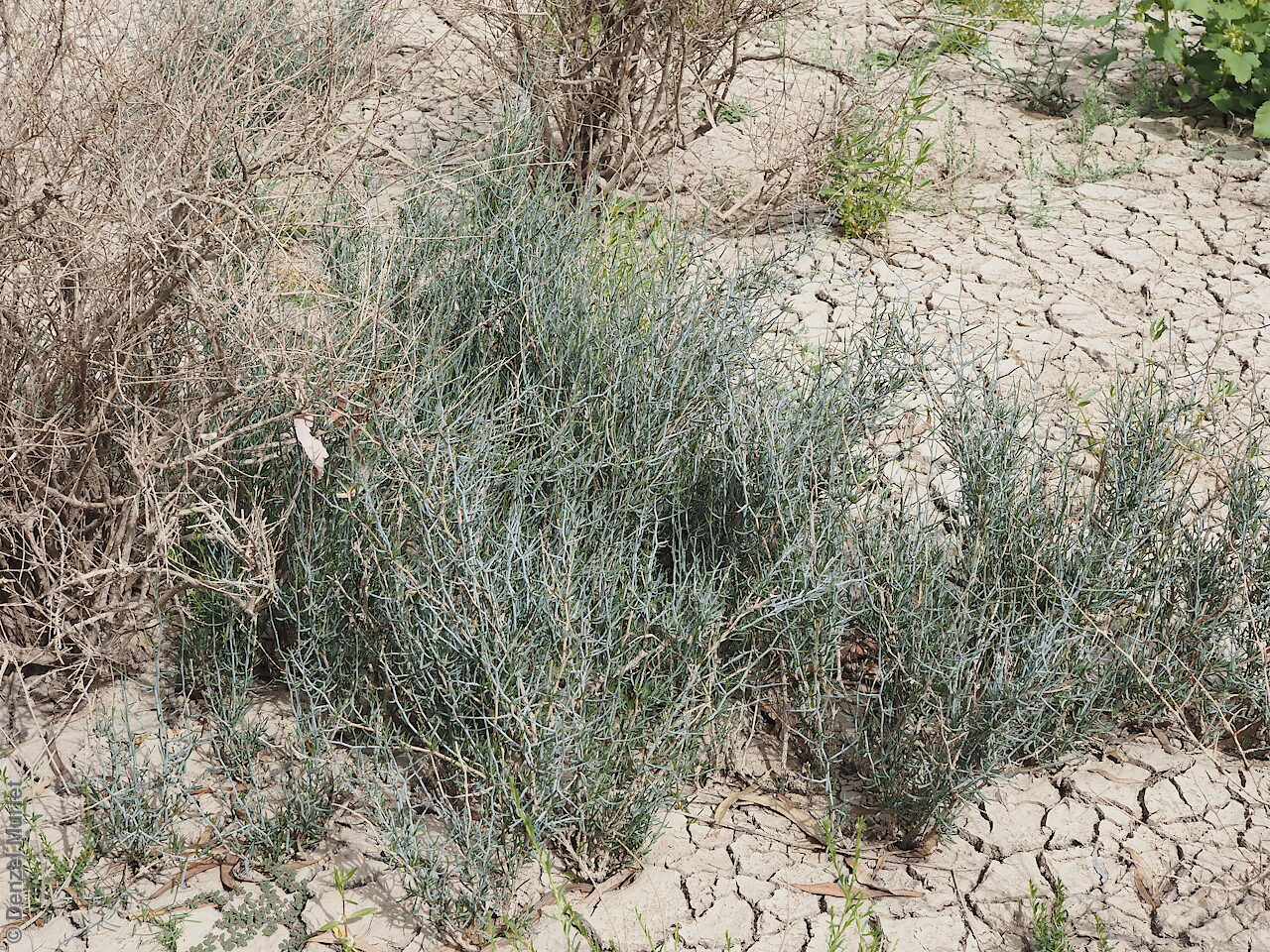
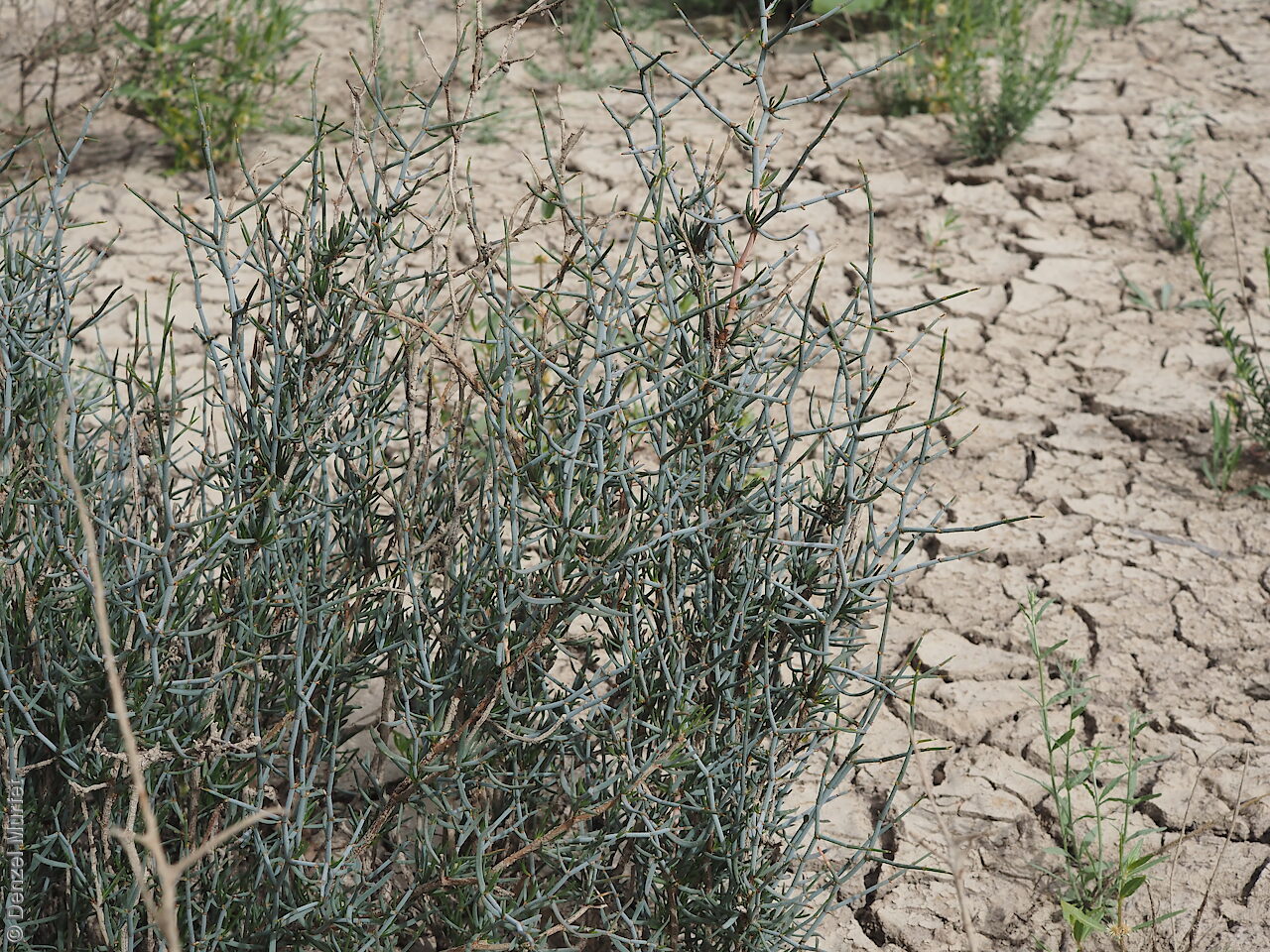
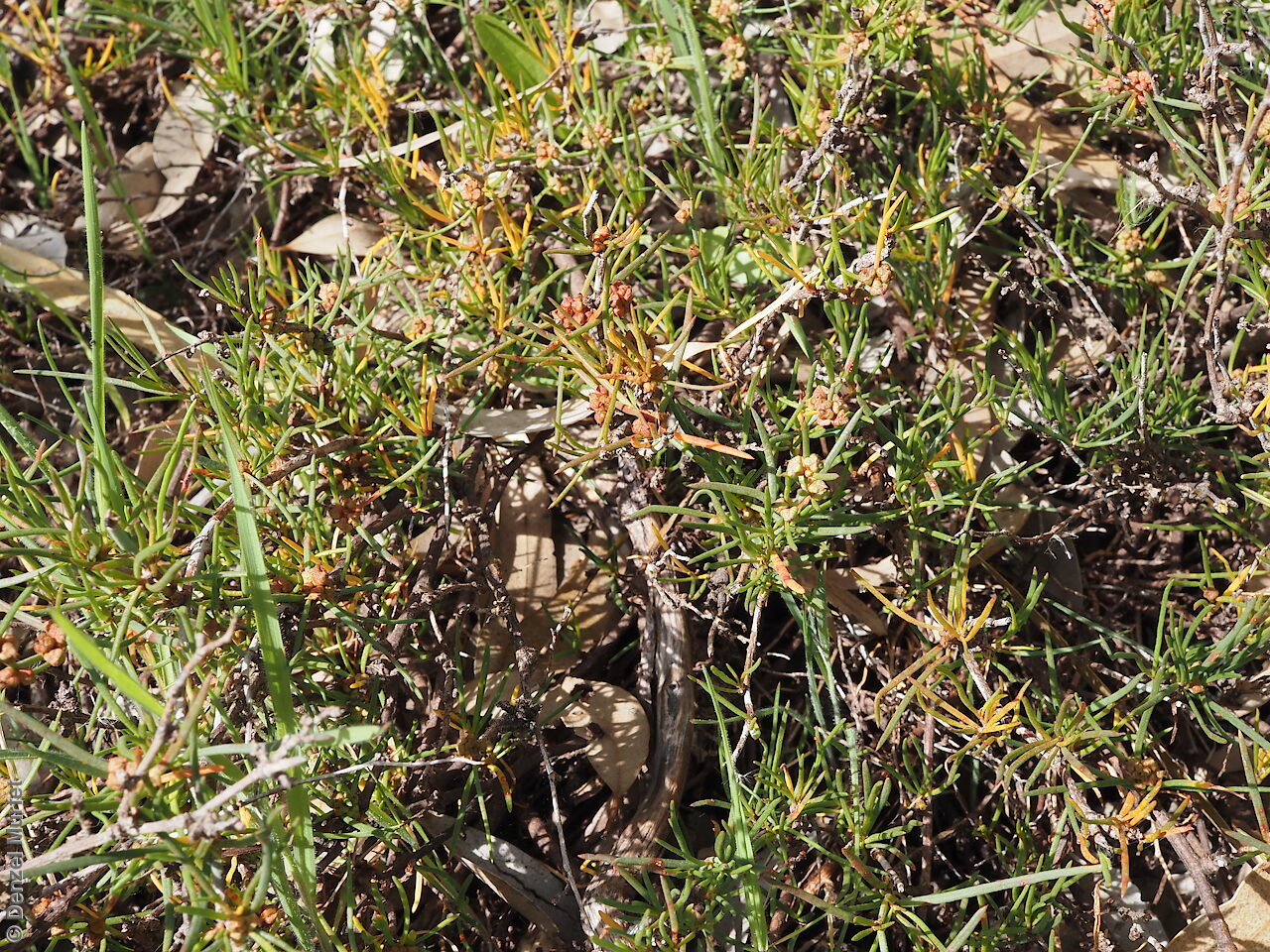
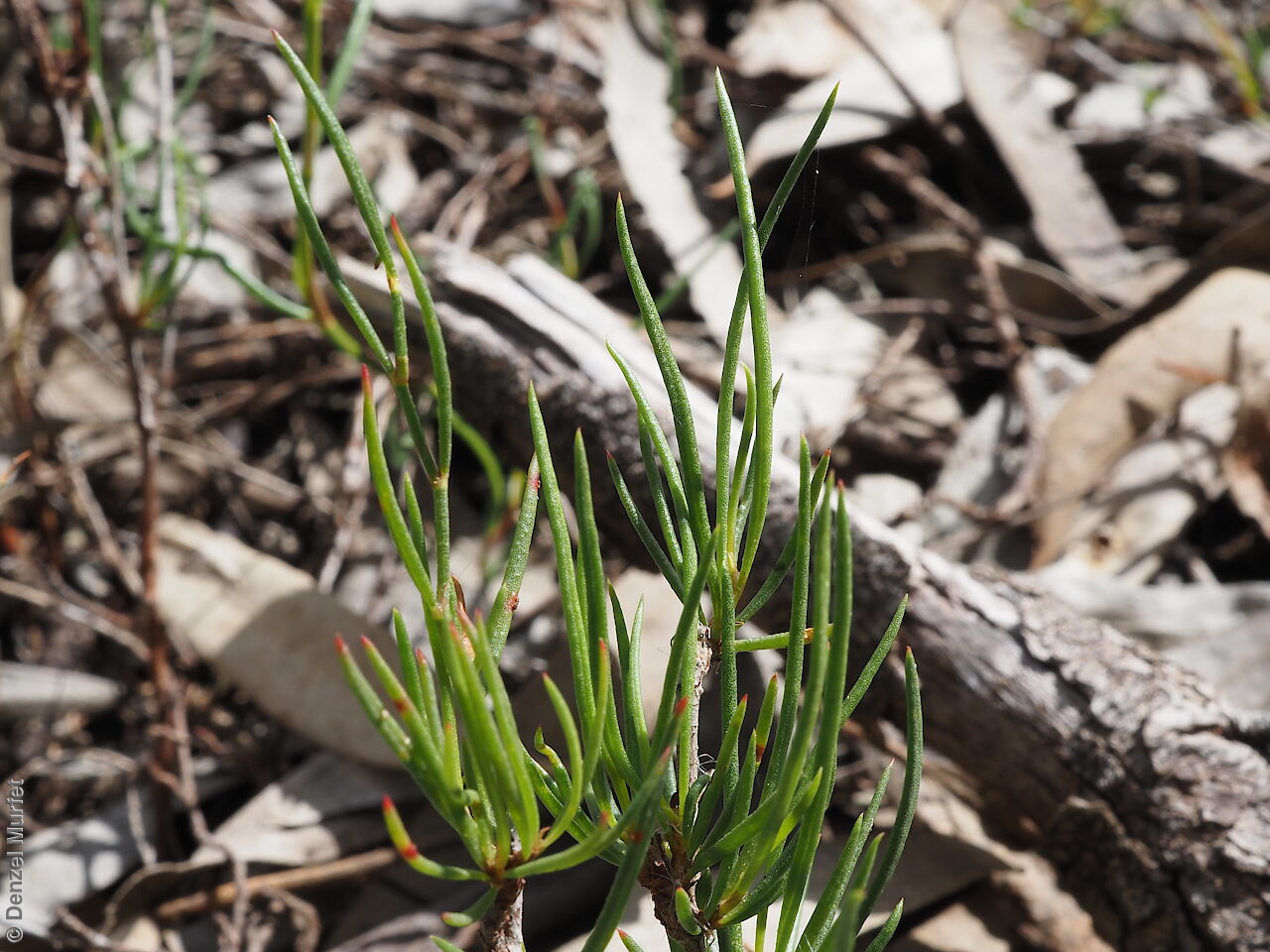
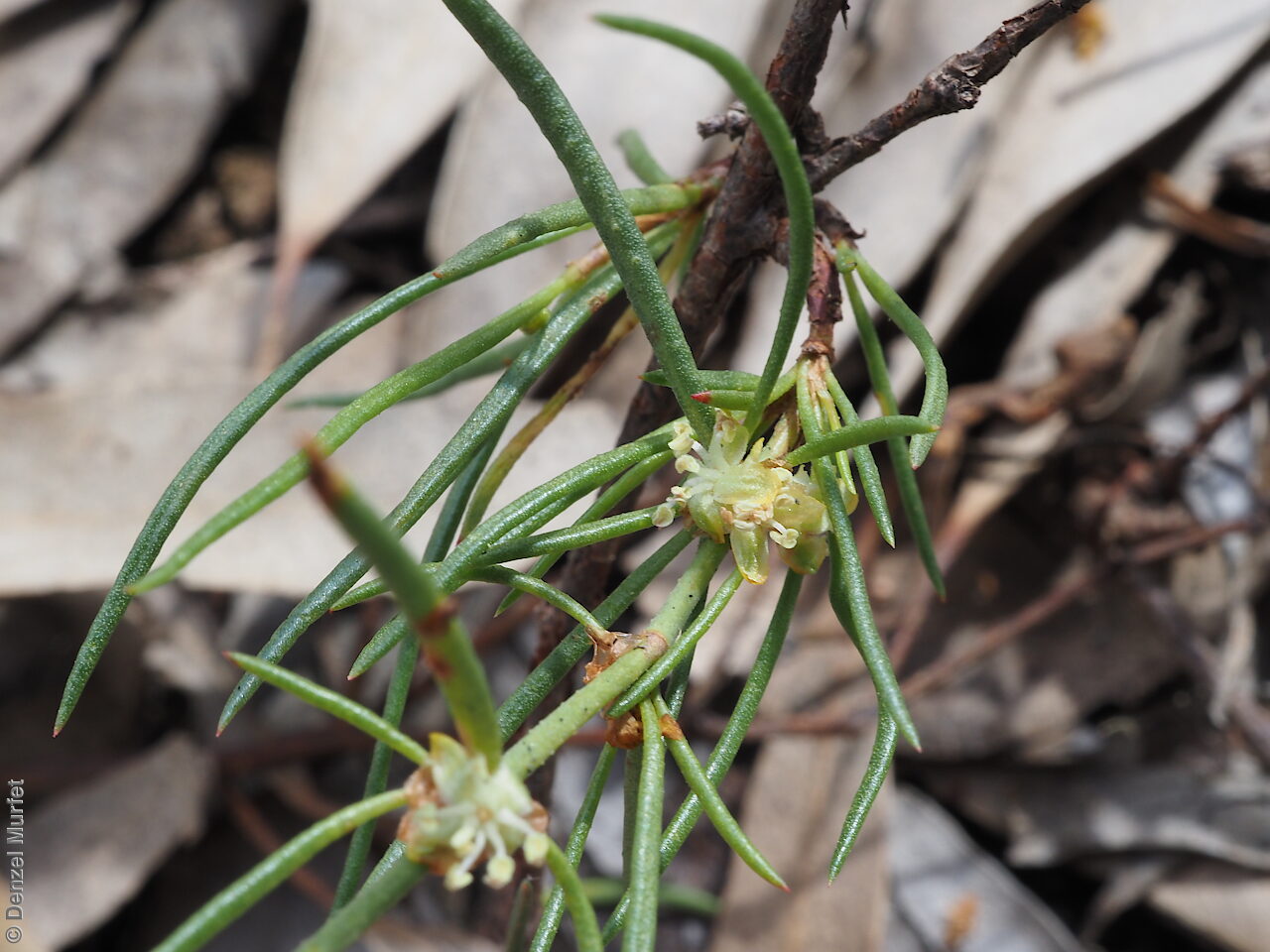
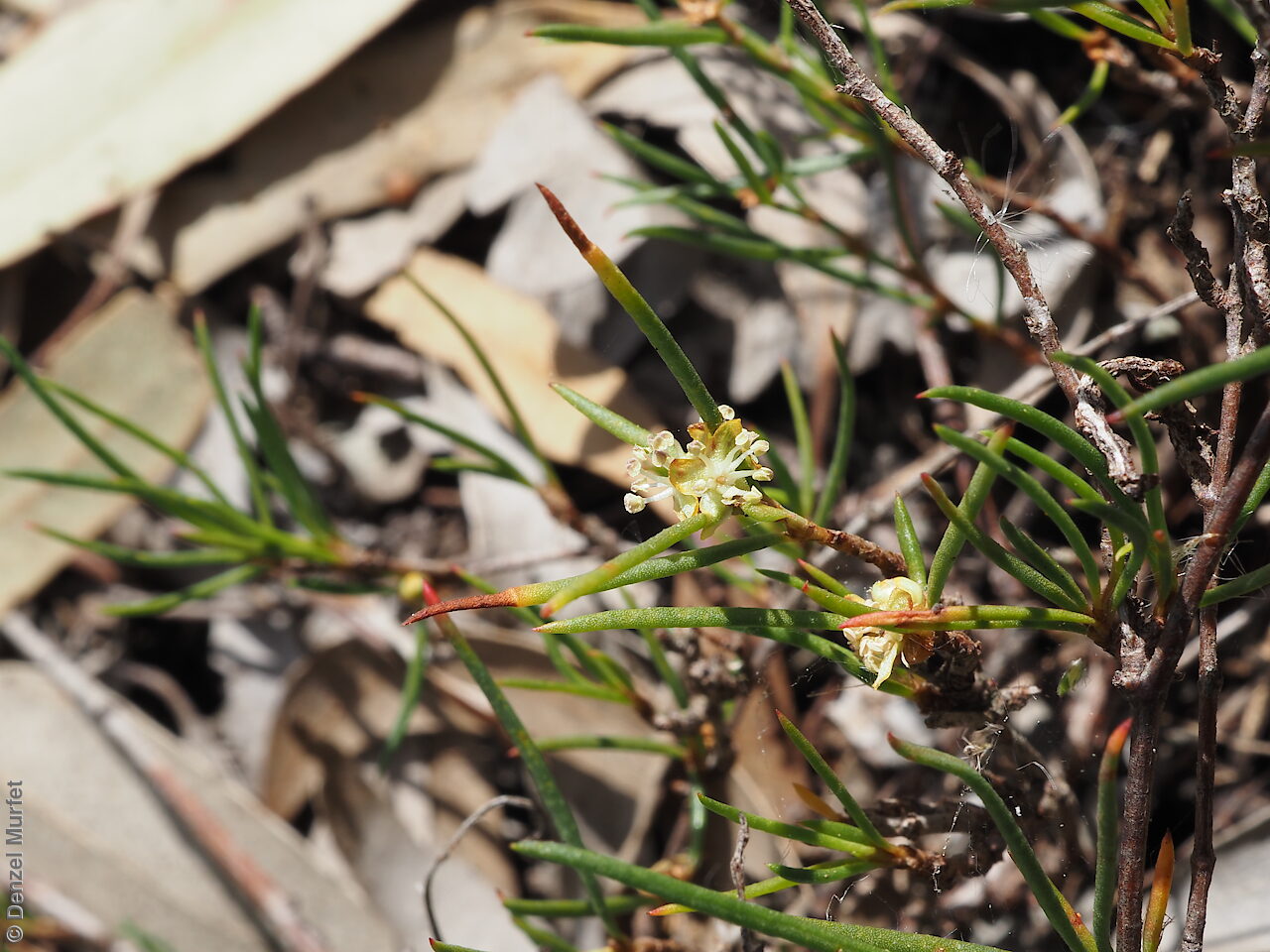
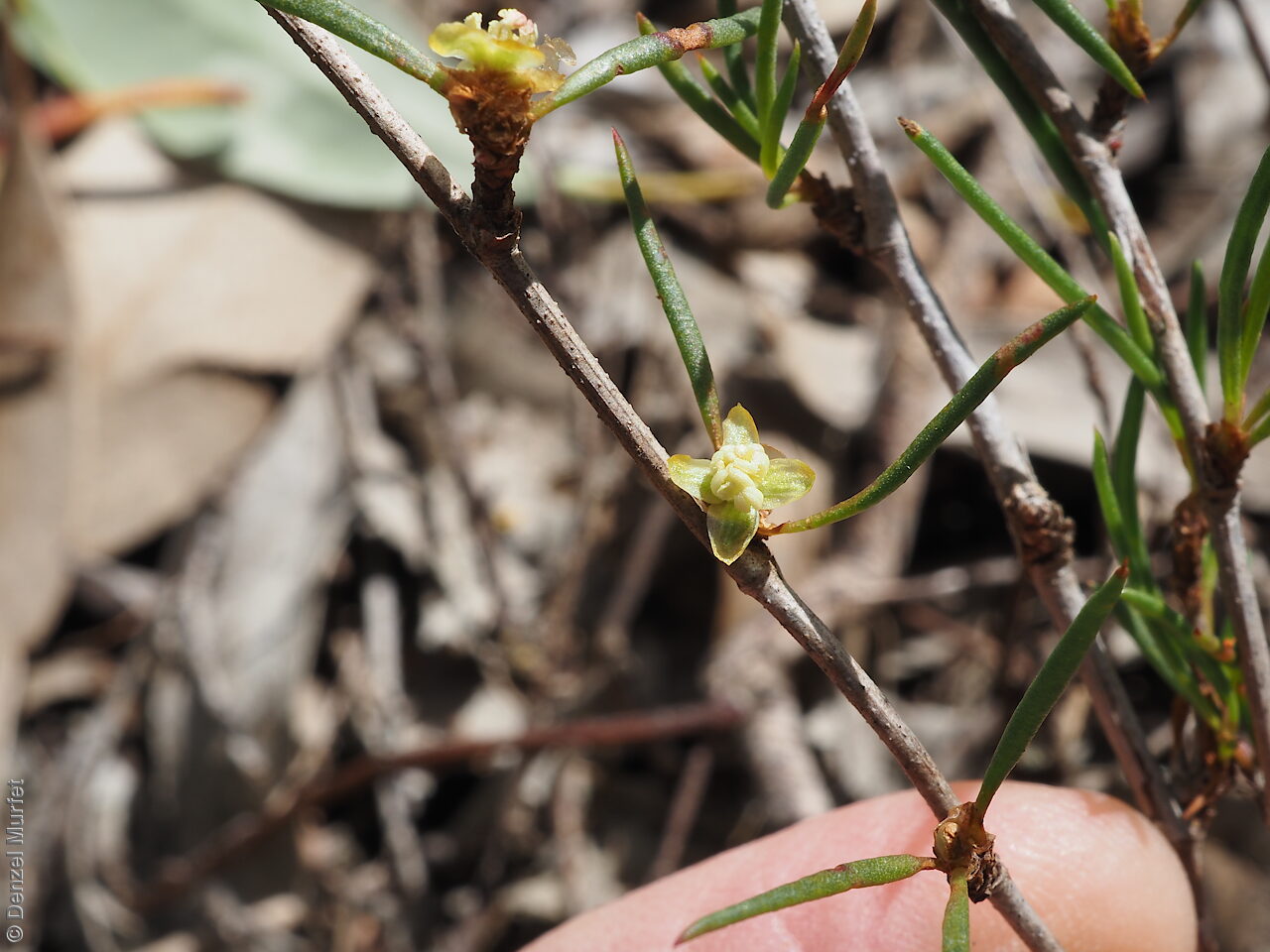

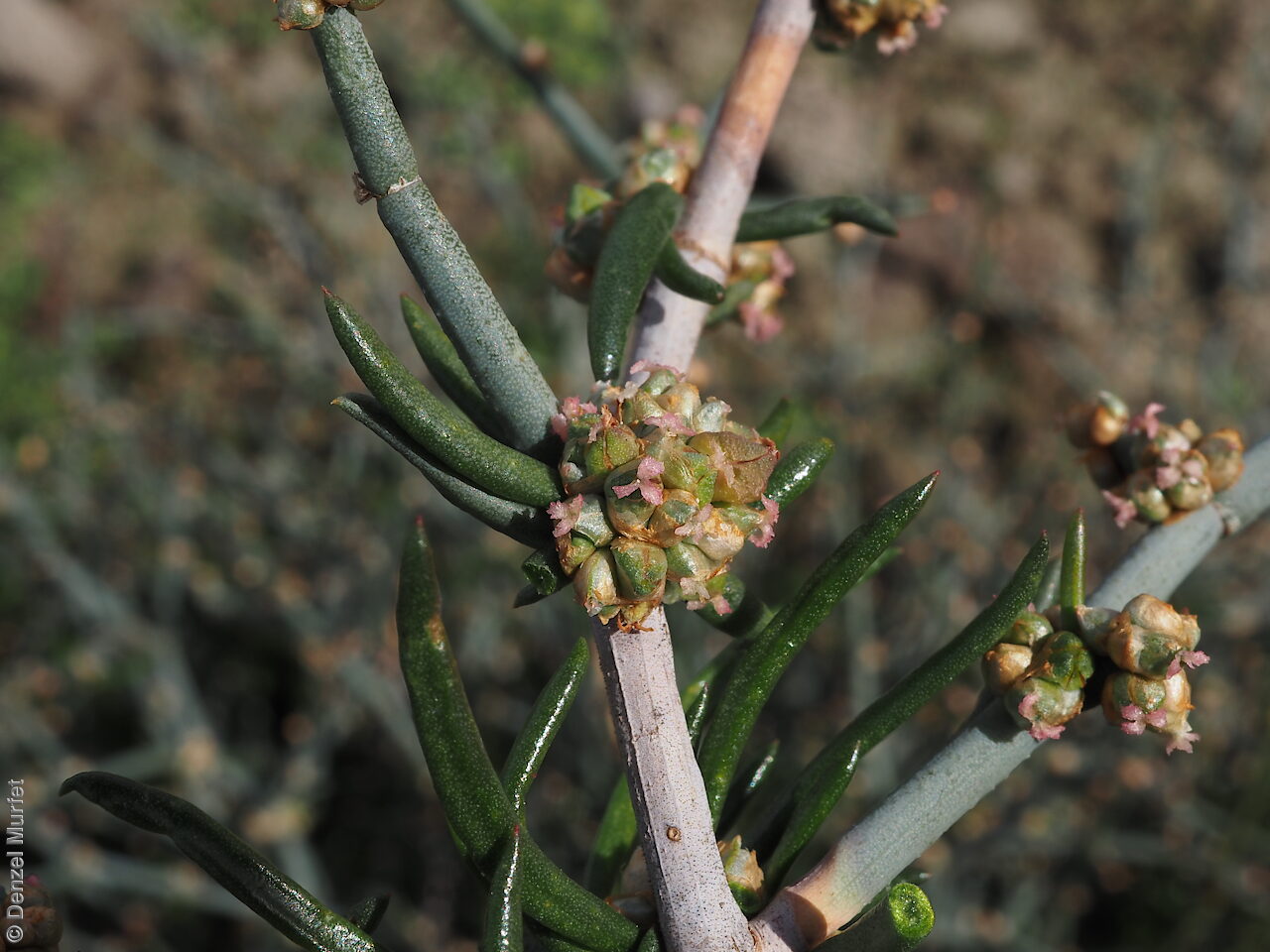

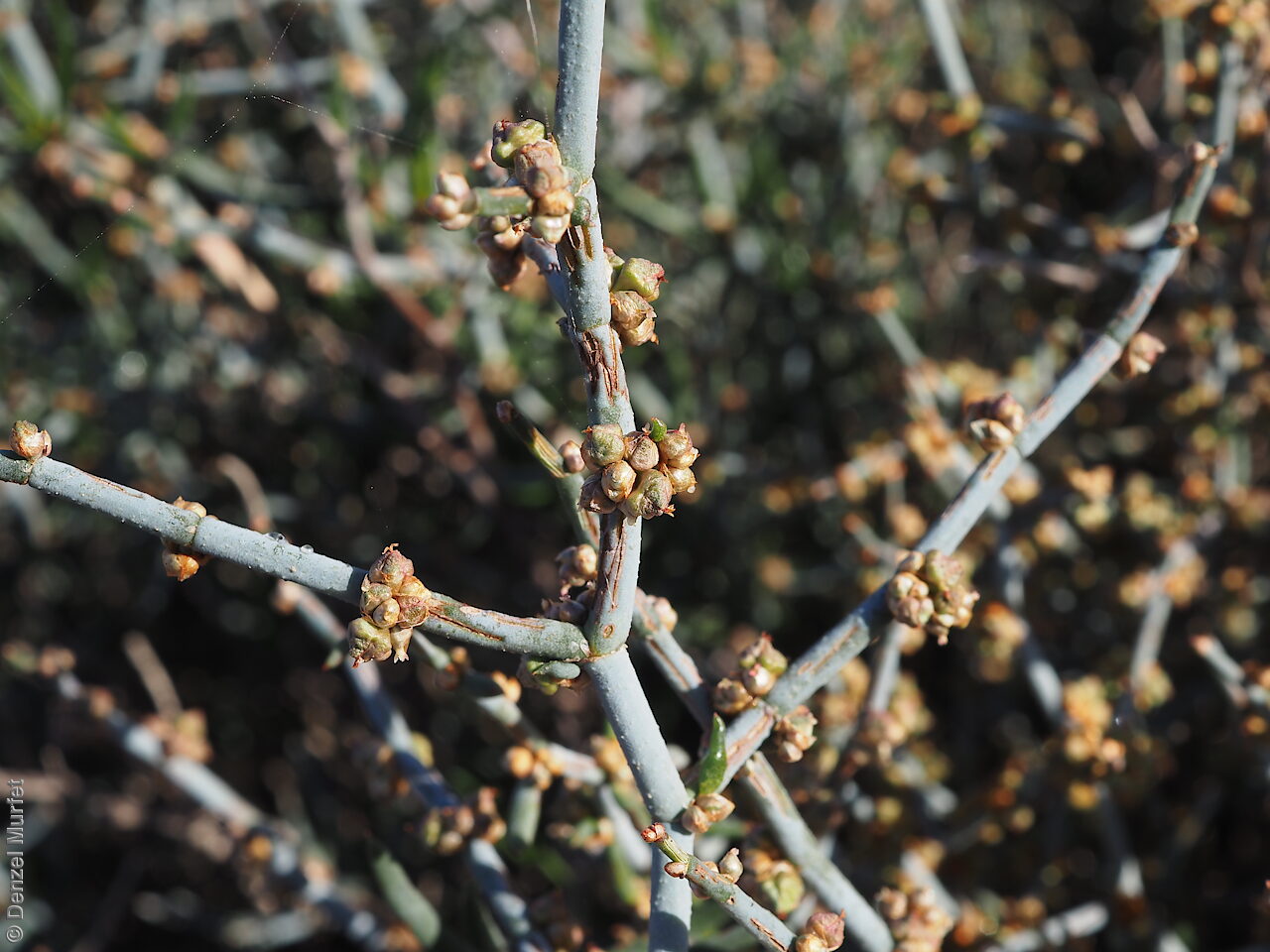
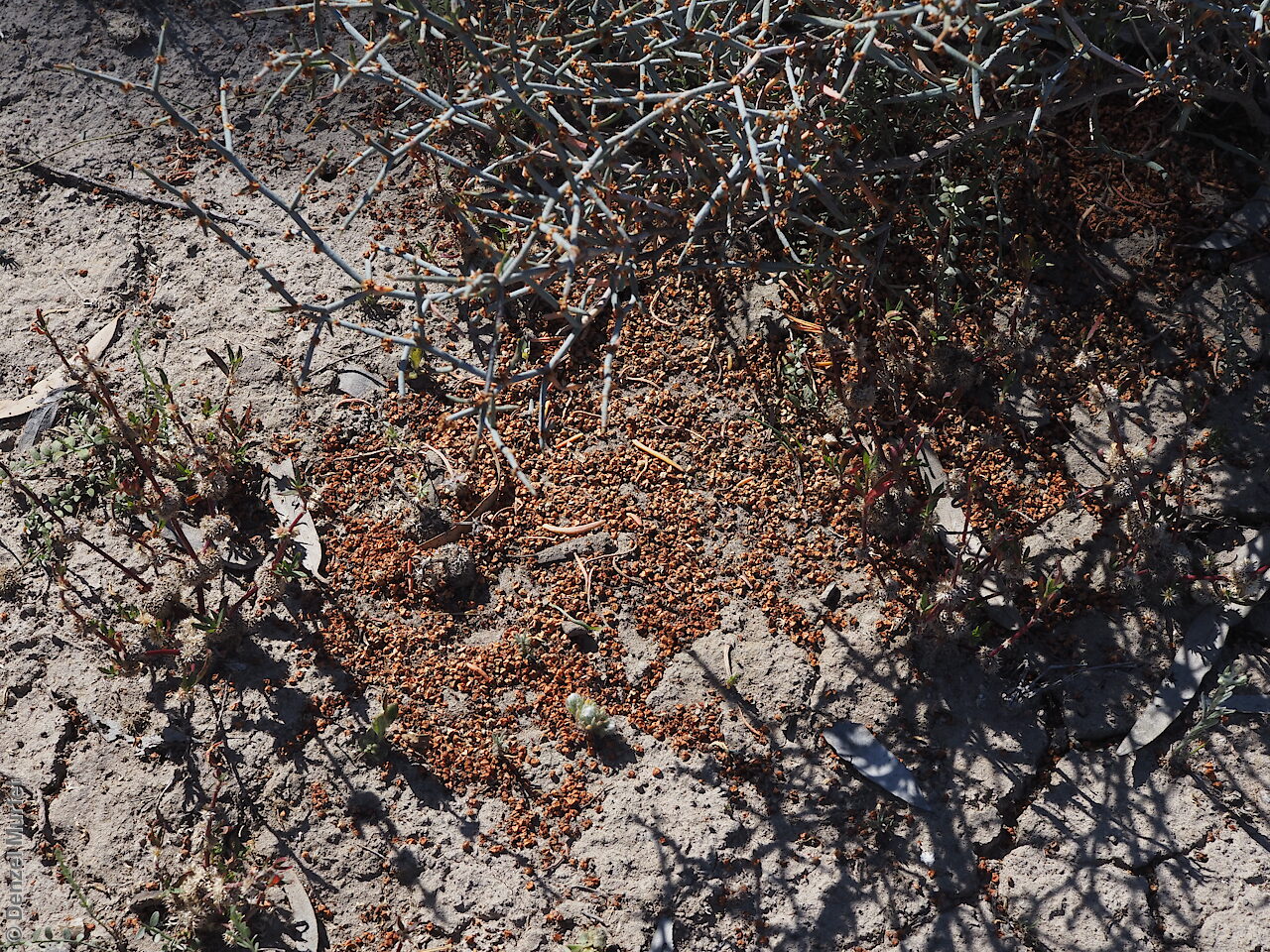
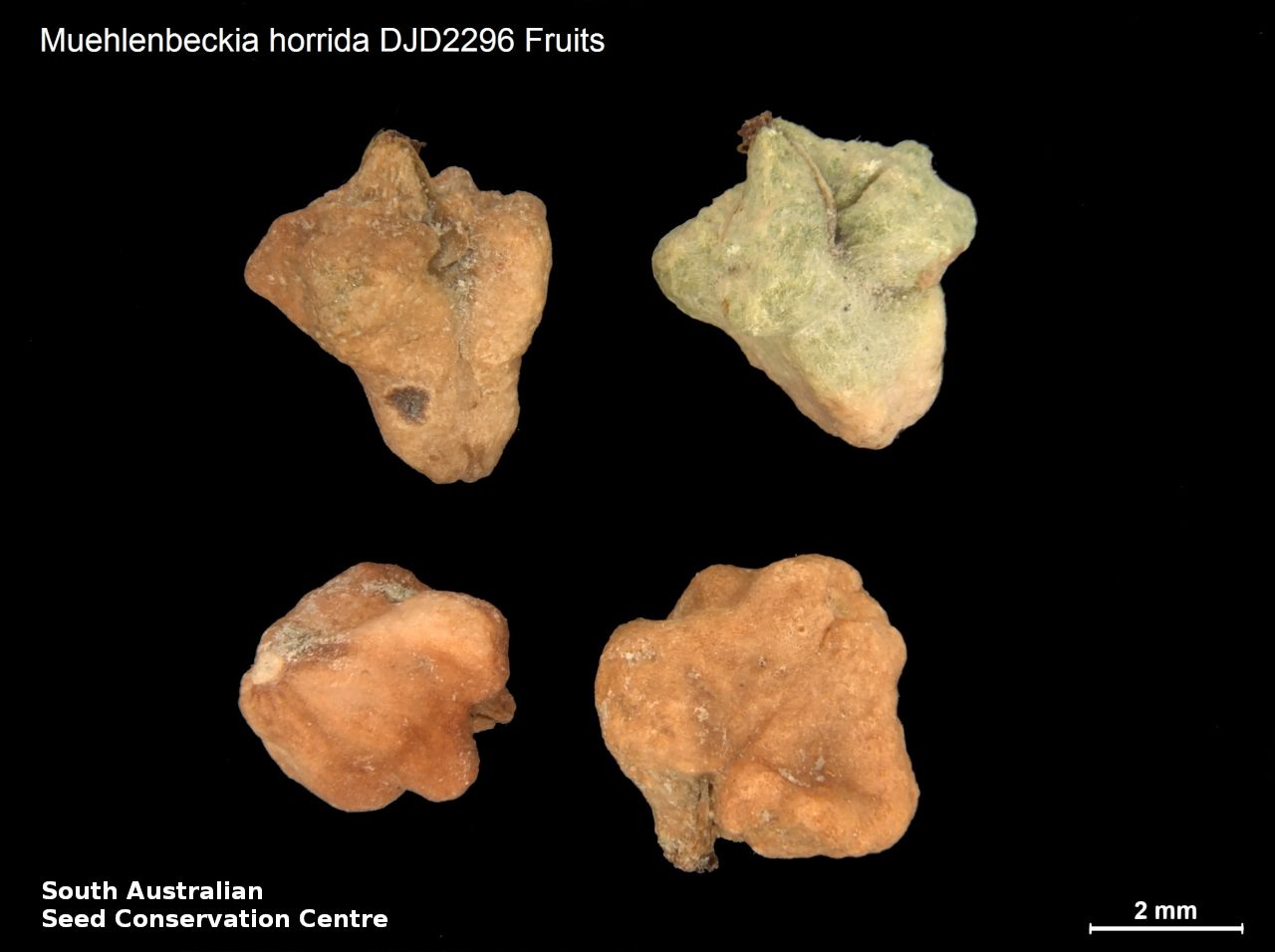
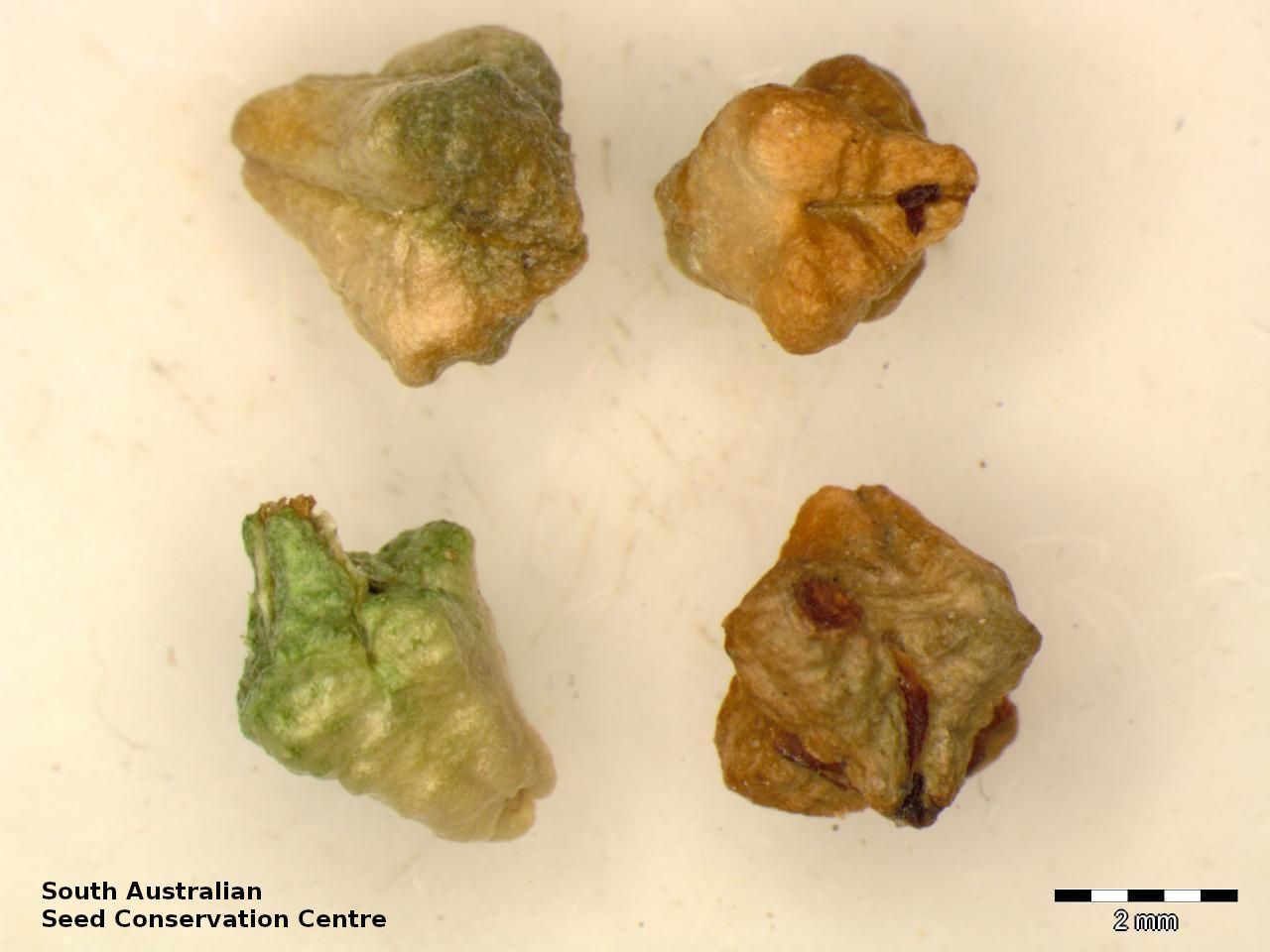
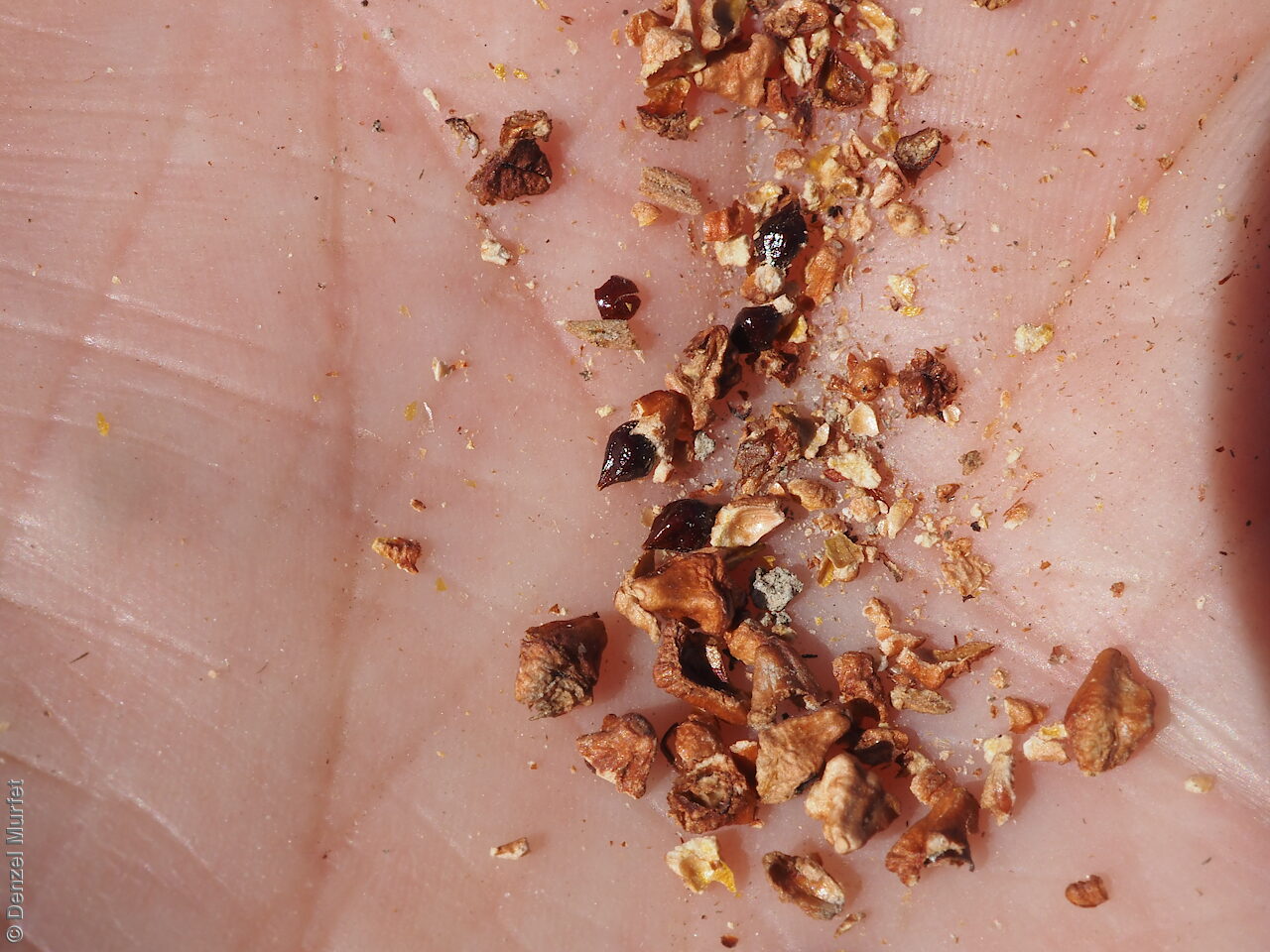
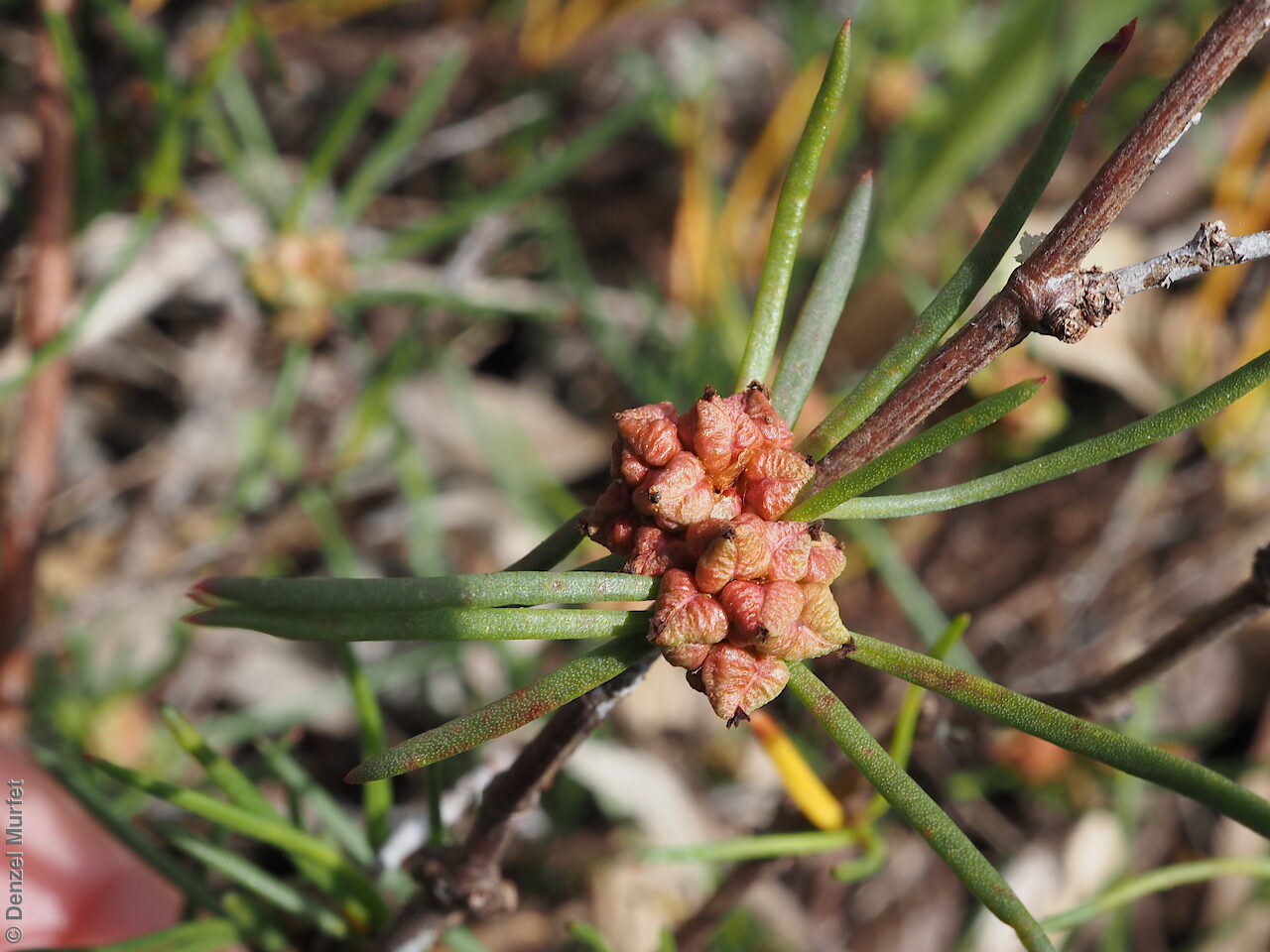
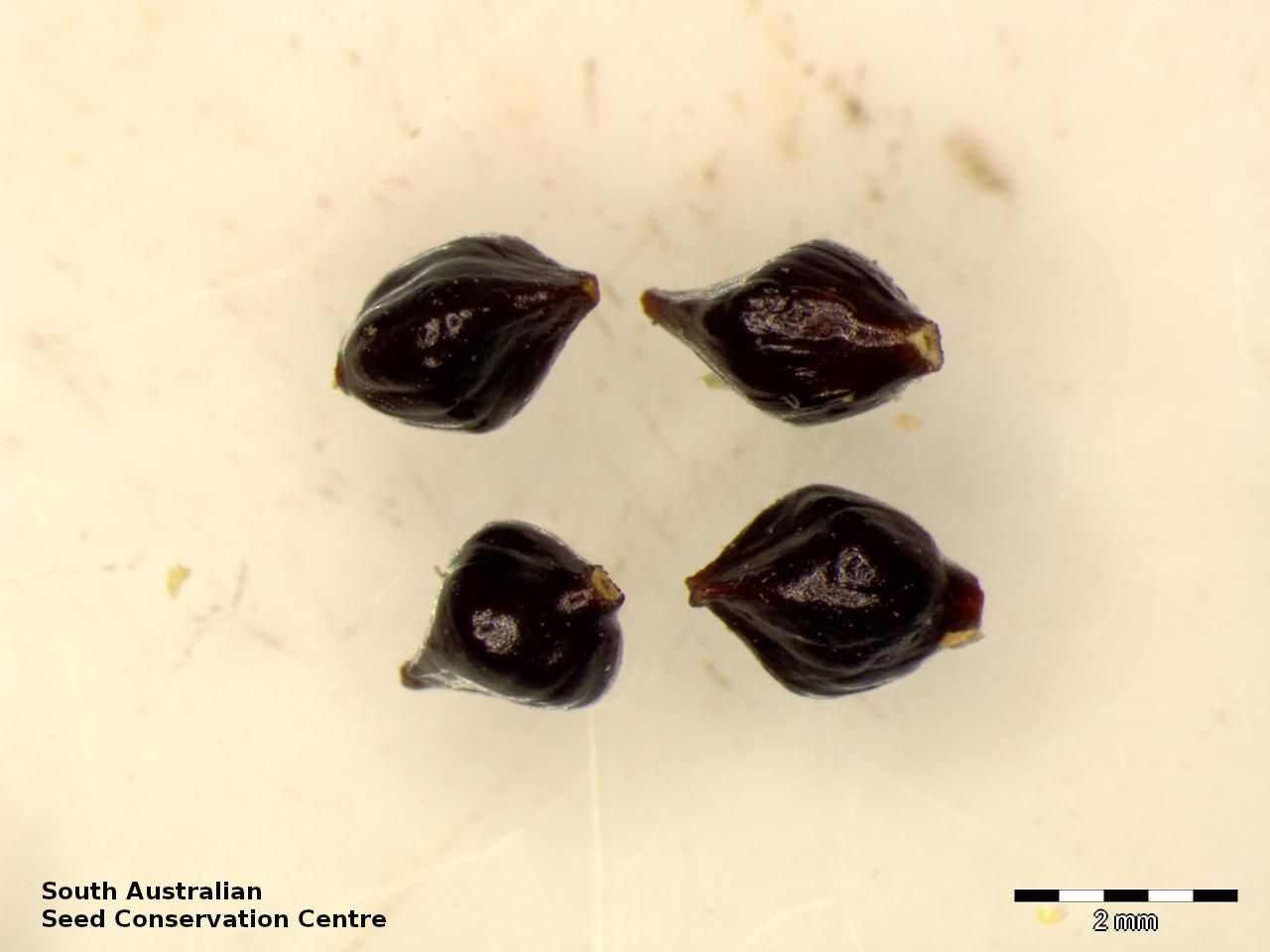

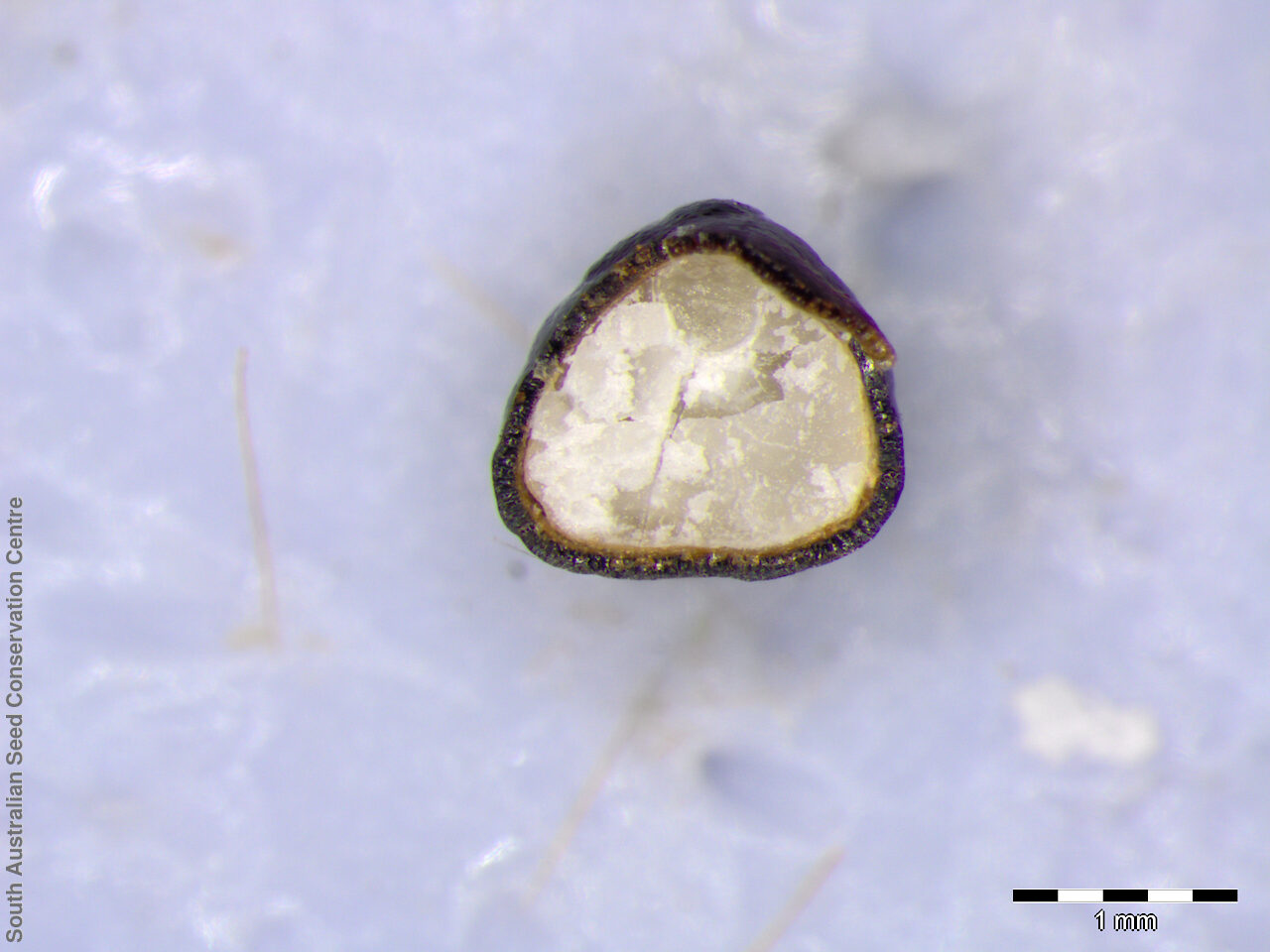

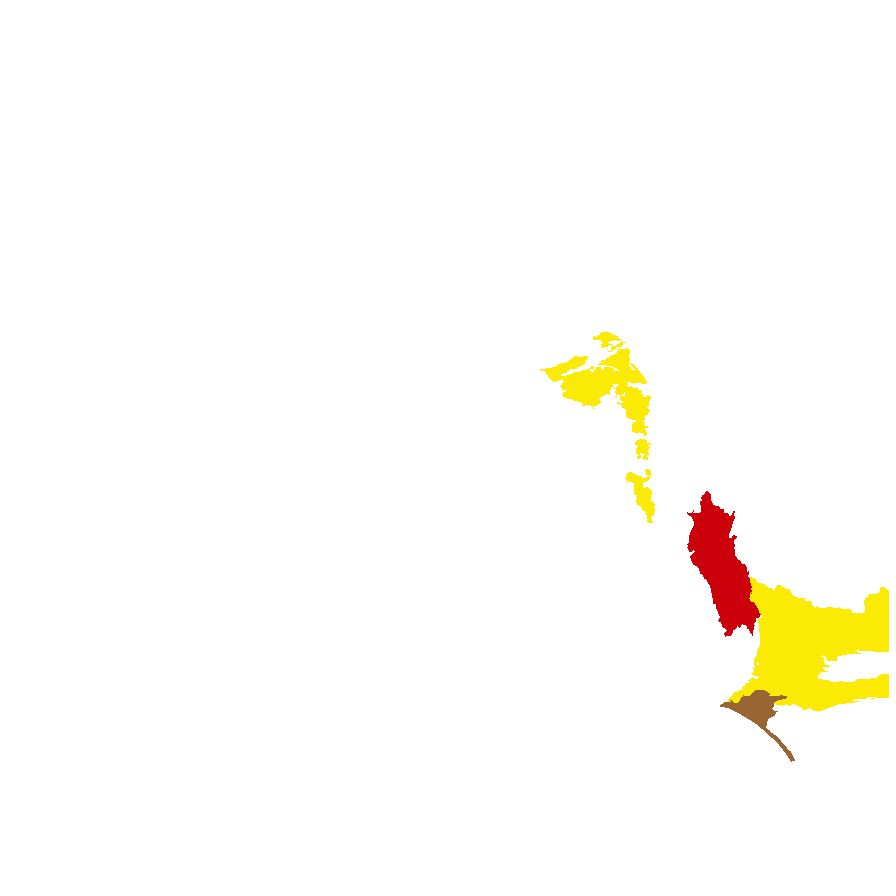
Botanical art
Prior names
Muehlenbeckia horrida ssp. horrida
Common names
Spiny Lignum
Etymology
Duma from Latin meaning thorny, referring to the thorn-like branch tips of the Genus . Horrida from the Latin 'horridus' meaning rough, shaggy, prickly, referring to its more irregular and rough appearance than the other species.
Distribution and status
Found along the Murray River in South Australia growing on floodplains and beside dry inland lakes. Also found in New South Wales and Victoria. Native. Rare in South Australia. Rare in Victoria.
Herbarium regions: Gairdner-Torrens, Murray, South Eastern
AVH map: SA distribution map (external link)
Plant description
Stiff, divaricately branched but rather open shrub to 1 m high and wide with greyish-brown stems, partly leafless and often with spine-tip. Leaves crowded on very short lateral branches, eventually shed; linear to 50 mm long and 2 mm wide; papery. Inflorescence in axillary or nodal clusters with small, green or yellowish flowers. Flowering between March and October. Fruits are green-brown angular-tuberculate, 4-sided fruit. Seeds are shiny dark brown to black ellipsoid to ovoid seed to 2.5 mm long and 2 mm wide. Seed embryo type is peripheral.
Seed collection and propagation
Collect seeds between July and December. Collect ripping fruits that are turning brown and containing a hard brown to black seed. Mature fruits will come off easily. Place fruits in a tray and leave to dry for 1-2 weeks. Then rub the fruit with a rubber bung to dislodge the seeds. use a sieve to separate unwanted material. Then store the seeds with a desiccant such as dried silica beads or dry rice, in an air tight container in a cool and dry place. This species has intermediate to deep physiological dormancy.
| Location | No. of seeds (weight grams) | Number of plants | Date collected | Collection number Collection location | Date stored | % Viability | Storage temperature |
|---|---|---|---|---|---|---|---|
| BGA | 2,200 (18.76 g) | 25 | 19-Oct-2011 | DJD2296 Murray | 1-Nov-2012 | 100% | -18°C |
Number of plants: This is the number of plants from which the seeds were collected.
Collection location: The Herbarium of South Australia's region name.
% Viability: Percentage of filled healthy seeds determined by a cut test or x-ray.